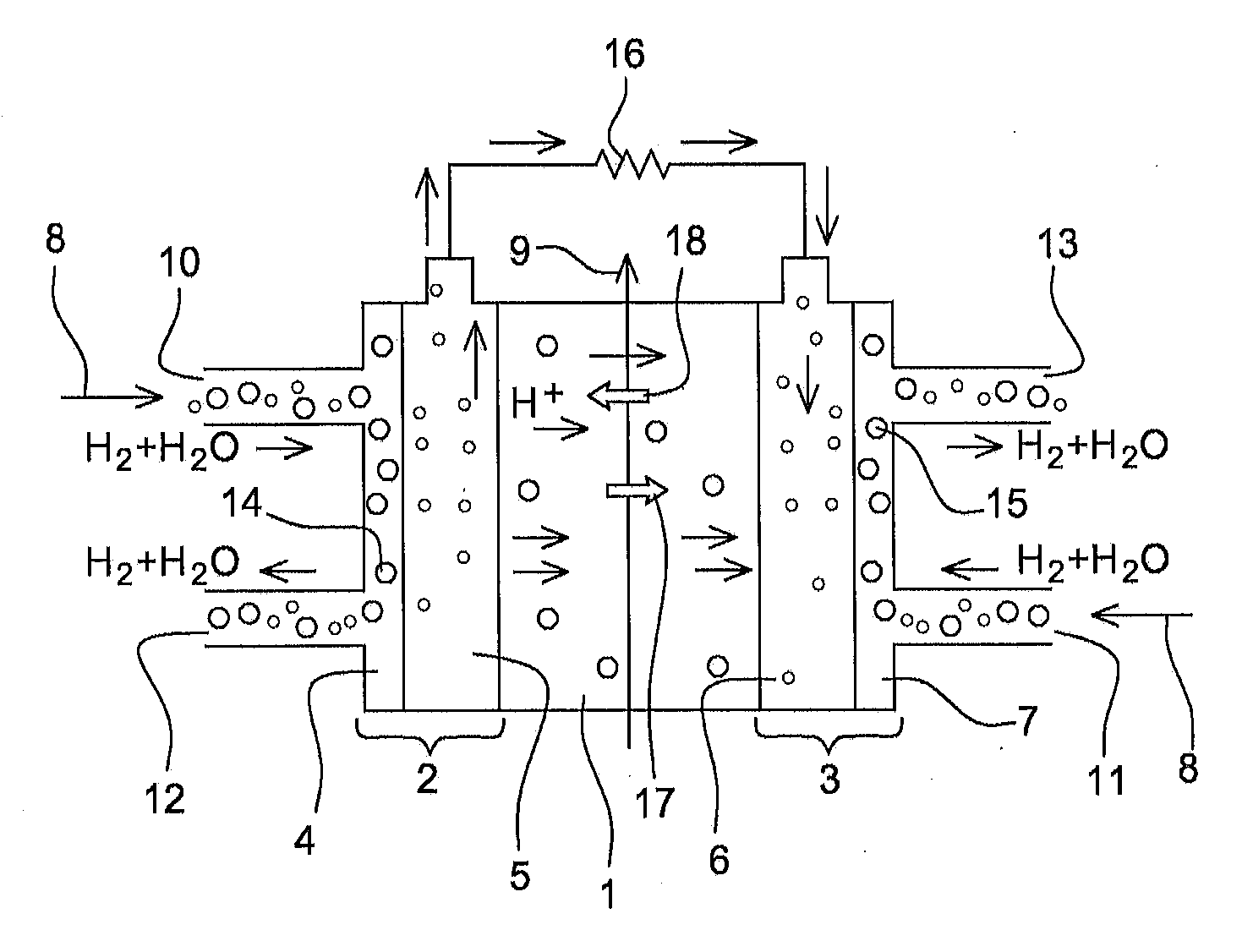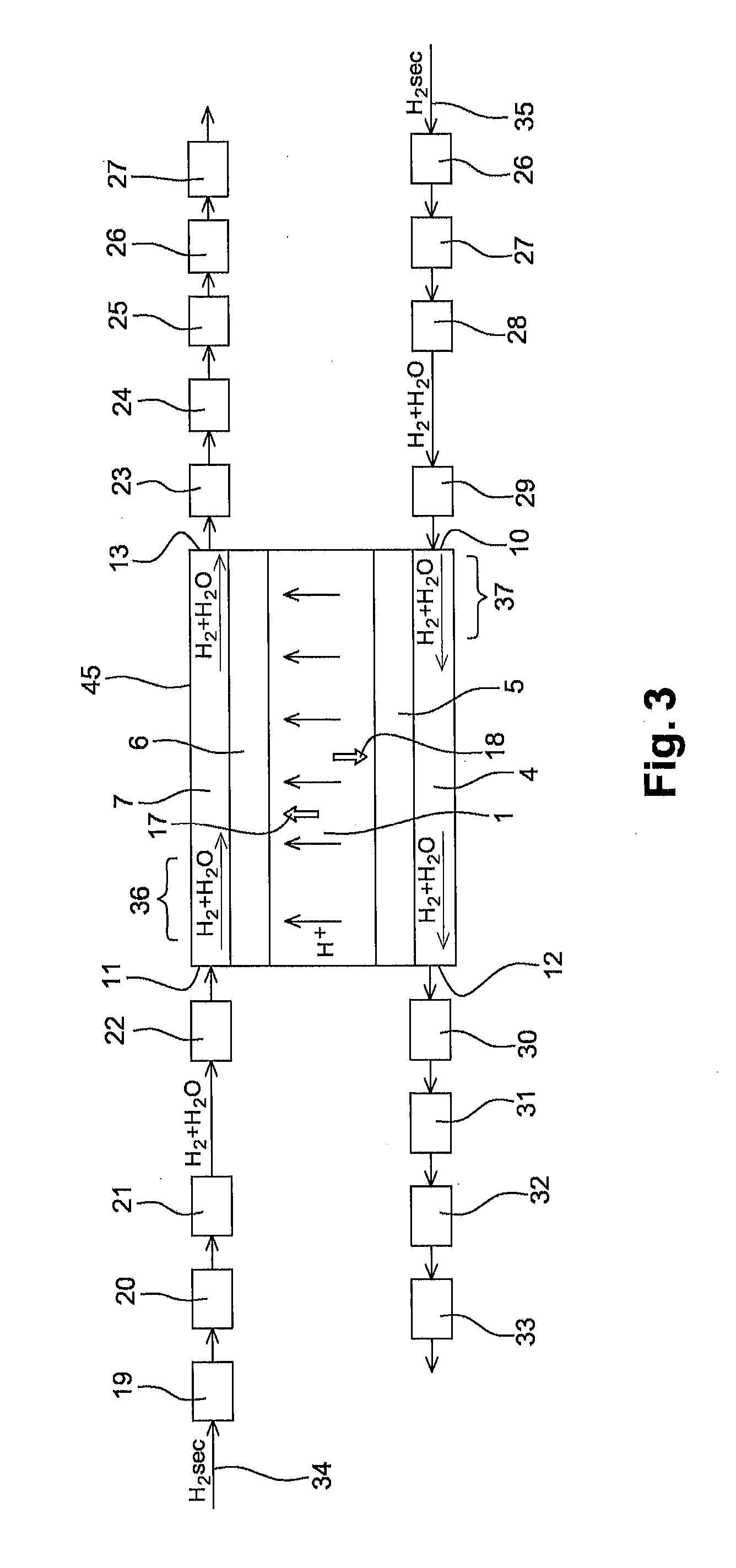Method of measuring the electroosmotic transport coefficient of a proton exchange membrane and device for implementing such a method
- Summary
- Abstract
- Description
- Claims
- Application Information
AI Technical Summary
Benefits of technology
Problems solved by technology
Method used
Image
Examples
Embodiment Construction
[0124]FIG. 1 represents a single fuel cell in which the method according to the invention is implemented.
[0125]FIG. 2 represents a device in which the method according to the invention is implemented.
[0126]In the case of FIG. 1, as in the case of FIG. 2, one wishes is to measure the electroosmotic transport coefficient K of a proton exchange membrane 1.
[0127]To do so, membrane 1 is disposed between a first compartment 2 and a second compartment 3. The first compartment 2 comprises a first channel 4 in which the chemical species may circulate and an anode 5. The second compartment 3 comprises a second channel 7 in which the chemical species may circulate and a cathode 6.
[0128]The membrane extends along a longitudinal direction 9. The first and second channels each extend on either side of the membrane along the longitudinal direction 9.
[0129]The first and second channels 4, 7 each comprise an entrance, respectively 10, 11, and an exit, respectively 12, 13. The entrance of each channe...
PUM
 Login to View More
Login to View More Abstract
Description
Claims
Application Information
 Login to View More
Login to View More - R&D
- Intellectual Property
- Life Sciences
- Materials
- Tech Scout
- Unparalleled Data Quality
- Higher Quality Content
- 60% Fewer Hallucinations
Browse by: Latest US Patents, China's latest patents, Technical Efficacy Thesaurus, Application Domain, Technology Topic, Popular Technical Reports.
© 2025 PatSnap. All rights reserved.Legal|Privacy policy|Modern Slavery Act Transparency Statement|Sitemap|About US| Contact US: help@patsnap.com



